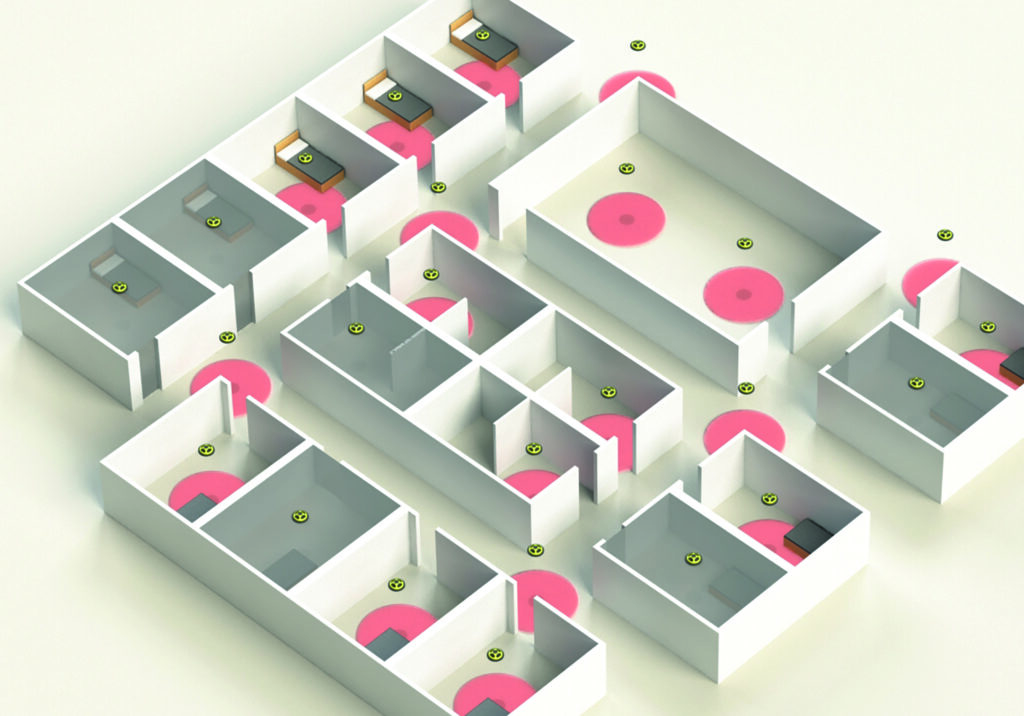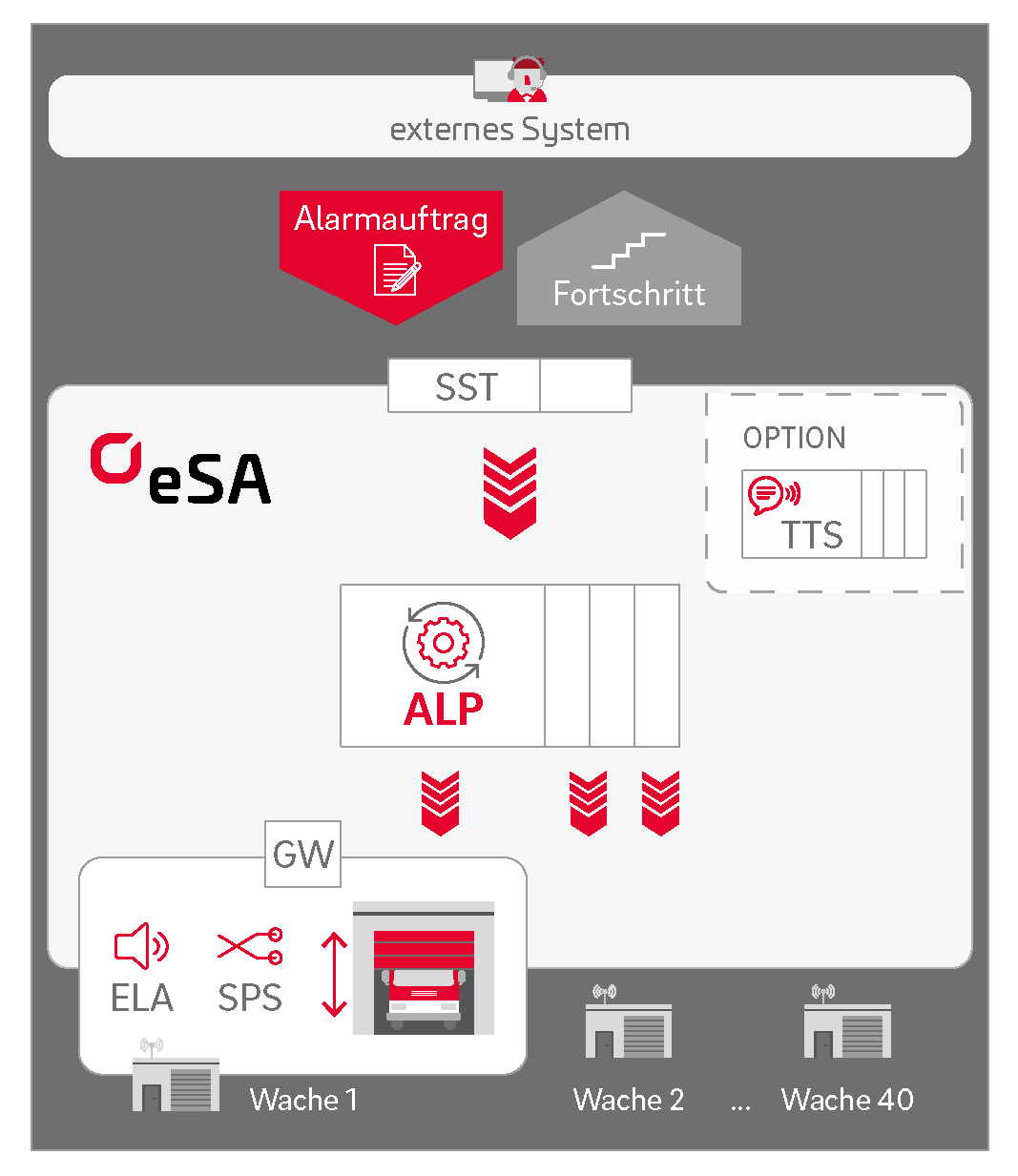eSA – eurofunk Station Alert – Enhancing Sleep-Friendly Station Alert Solutions
.
In the realm of emergency response, it is commonplace for volunteer fire departments and rescue services to rely primarily on radio-based alerts. These notifications encompass a variety of digital radio channels, pagers, sirens, and mobile phone applications. Conversely, professional fire departments, often stationed within dedicated firehouses, predominantly receive acoustic alerts through Station Alarm (SAL) systems, coupled with automated building service controls. This comprehensive approach enables the activation of specialized alarm lighting circuits, the operation of exit gates, and the management of traffic light systems. To ensure that loudspeaker announcements during nighttime operations do not disturb unaffected crews or neighboring communities, it is imperative to tailor alerts to the required personnel and adapt them to the time of day.
Enter eurofunk Station Alert (eSA), a groundbreaking solution designed to address this critical need for targeted and non-disruptive alerting. Leveraging state-of-the-art VoIP voice processing modules, eSA is capable of managing up to 40 stations simultaneously while providing individual control over numerous public address circuits within each station.
To ensure precise notification of essential emergency services without disrupting the rest and well-deserved repose of others, the eSA system can selectively activate individual loudspeaker circuits tailored to specific areas within a room.

Outside of quiet hours, when the whereabouts of emergency personnel are uncertain, additional loudspeaker circuits are often integrated into the station alarm system. These distinctions, whether between day and night or other operational scenarios, are governed by predefined station alarm scenarios that are automatically activated by the system at the appropriate times. This approach ensures efficient and context-aware alerting tailored to the prevailing circumstances.

ARCHITECTURE
The redundant SAL interface component serves as the initial point of contact for external systems, typically Emergency Locator Systems (ELS) or communication systems. It effortlessly channels alarm requests to a selected SAL processor.
The Station Alarm (SAL) processor serves as the central component of the SAL, playing a pivotal role in its operation. It systematically handles incoming alarm tasks, categorizing them according to their respective priority levels, and momentarily stores them in a buffer. Additionally, the SAL processor ensures seamless communication with the external system via the station alarm interface, providing timely updates on task progress. Moreover, the alarm processor assumes responsibility for orchestrating the dissemination of audio signals to individual stations, thereby enhancing the overall efficiency and coordination of the system.
Each station is equipped with a SAL gateway component, which includes the electro-acoustic system (ELA) control and programmable logic controller (PLC). Thanks to its modular design, the gateway facilitates the integration of ELA and PLC products readily available in the market. Deployment options include embedding the gateway directly on-site within the ELA rack or configuring it as a Linux service centrally at a technical site in a virtualized environment.
OPTIONS AND VARIANTS
In cases where external mission control or communication systems lack text-to-speech (TTS) support, eSA offers an integrated TTS option to bridge this gap. eSA seamlessly interfaces with commonly used mission control systems and communication platforms. If an organization already employs the Integrated Digital Dispatch System Unified Communications Platform (IDDS UCiP), eSA can be integrated as an additional subsystem. This integration streamlines configuration efforts and simplifies the overall system architecture.
Additional features of eSA include:
- Efficient integration of station alerting into external systems is achieved through the automated processing of alarms and real-time status feedback, including notifications such as “alarm bell complete” or “announcement in progress”.
- Buffered alarms and audio content ensure optimal chronological sequencing, allowing users to create audio recordings without concerns about concurrent system activity.
- In scenarios where audio content is transmitted as files, a dedicated file can be assigned to each station.
- Loudspeaker circuits, gates, emergency lights, and other Programmable Logic Controller (PLC) outputs are interconnected with what we refer to as “speech circuits.” These speech circuits serve as a direct representation of emergency forces and resources. Furthermore, they have been meticulously engineered to streamline control through an operations control system.
- Following the initial setup by eurofunk, administrators gain full control through the user-friendly station alarm administration interface. This flexibility enables quick remote adjustments to room allocations, accommodating changes or renovations without impacting the operations control system.
- Emergency personnel can adjust their resting room assignments autonomously through a dedicated web application which has been integrated into the system‘s alerting mechanism. This guarantees that any alterations in room allocation are consistently taken into account during the alerting process.
